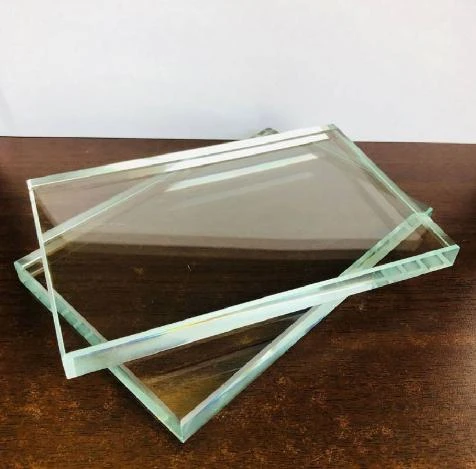The Manufacturing Process of Tempered Glass
Tempered glass, also known as safety glass, is a type of glass that has been treated by controlled thermal processes to increase its strength compared to standard glass. The manufacturing of tempered glass involves several intricate steps that ensure its durability, safety, and clarity. Here’s an overview of the various stages involved in the production of tempered glass.
1. Raw Material Selection
The manufacturing process of tempered glass begins with the selection of high-quality raw materials. The primary material is silica sand, which is melted to form the glass. Other materials, such as soda ash, limestone, and alumina, may be added to enhance the glass's properties. The purity and quality of these raw materials significantly influence the final product's performance and clarity.
2. Melting
The first significant step in the production process is the melting of the raw materials. This occurs in large furnaces, typically heated to around 1,700 degrees Celsius (3,092 degrees Fahrenheit). At this temperature, the raw materials undergo a chemical transformation, melting into a viscous liquid glass. This molten glass is then carefully monitored for consistency and free of bubbles or impurities, ensuring a clear and strong end product.
3. Forming
Once the glass is melted, it is shaped into the desired form. This can be done through various methods, including float glass production, where the molten glass is floated on a layer of molten tin to create a flat surface. Alternatively, the glass can be cast into molds for specific shapes or applications. The forming process requires precision, as any defects at this stage can affect the strength of the tempered glass.
4. Annealing
After forming, the glass undergoes a process called annealing, where it is slowly cooled in a controlled environment. This step is critical, as it helps to relieve internal stresses that may have built up during the forming process. Proper annealing ensures that the glass will have a uniform thickness and improved structural integrity.
manufacturing process of tempered glass
5. Cutting and Edge Finishing
Once cooled, the glass sheets are cut to size according to specifications. This cutting must be done with great accuracy, as the dimensions directly affect the final product’s application. After cutting, the edges of the glass sheets are finished to remove any sharp edges or flaws. This is often done through grinding or polishing, ensuring that the edges are safe to handle and aesthetically pleasing.
6. Tempering
The most crucial stage in the manufacturing process is tempering. The glass sheets are heated again in a tempering furnace to about 620 degrees Celsius (1,148 degrees Fahrenheit). This heating is rapidly followed by a process of rapid cooling, known as quenching. The sudden temperature change creates tensile stresses on the surface of the glass while maintaining compressive stresses in the interior. This process increases the glass's strength significantly, making it approximately five times stronger than untreated glass of the same thickness.
7. Quality Control
Quality control is an integral aspect of the tempered glass manufacturing process. Throughout the production, samples are taken to ensure they meet industry standards for strength, clarity, and safety. Tests, including impact resistance and thermal shock resistance, are conducted to simulate real-world conditions the glass may face.
8. Packaging and Distribution
Once the tempered glass passes all quality checks, it is carefully packaged to prevent damage during transport. The packaging process protects the glass from scratches and impacts, ensuring it arrives at its destination intact. The glass is then distributed to various industries, including construction, automotive, and home furnishings, where it is used in windows, doors, shower enclosures, and more.
In conclusion, the manufacturing process of tempered glass is a sophisticated endeavor that involves meticulous attention to detail at each stage, from raw material selection to packaging. Its unique properties of strength and safety make tempered glass an essential material in modern architecture and design, providing both functional and aesthetic benefits. As technology continues to advance, the processes used in the production of tempered glass are likely to become even more efficient and innovative, meeting the demands of an ever-evolving market.
 Afrikaans
Afrikaans  Albanian
Albanian  Amharic
Amharic  Arabic
Arabic  Armenian
Armenian  Azerbaijani
Azerbaijani  Basque
Basque  Belarusian
Belarusian  Bengali
Bengali  Bosnian
Bosnian  Bulgarian
Bulgarian  Catalan
Catalan  Cebuano
Cebuano  Corsican
Corsican  Croatian
Croatian  Czech
Czech  Danish
Danish  Dutch
Dutch  English
English  Esperanto
Esperanto  Estonian
Estonian  Finnish
Finnish  French
French  Frisian
Frisian  Galician
Galician  Georgian
Georgian  German
German  Greek
Greek  Gujarati
Gujarati  Haitian Creole
Haitian Creole  hausa
hausa  hawaiian
hawaiian  Hebrew
Hebrew  Hindi
Hindi  Miao
Miao  Hungarian
Hungarian  Icelandic
Icelandic  igbo
igbo  Indonesian
Indonesian  irish
irish  Italian
Italian  Japanese
Japanese  Javanese
Javanese  Kannada
Kannada  kazakh
kazakh  Khmer
Khmer  Rwandese
Rwandese  Korean
Korean  Kurdish
Kurdish  Kyrgyz
Kyrgyz  Lao
Lao  Latin
Latin  Latvian
Latvian  Lithuanian
Lithuanian  Luxembourgish
Luxembourgish  Macedonian
Macedonian  Malgashi
Malgashi  Malay
Malay  Malayalam
Malayalam  Maltese
Maltese  Maori
Maori  Marathi
Marathi  Mongolian
Mongolian  Myanmar
Myanmar  Nepali
Nepali  Norwegian
Norwegian  Norwegian
Norwegian  Occitan
Occitan  Pashto
Pashto  Persian
Persian  Polish
Polish  Portuguese
Portuguese  Punjabi
Punjabi  Romanian
Romanian  Russian
Russian  Samoan
Samoan  Scottish Gaelic
Scottish Gaelic  Serbian
Serbian  Sesotho
Sesotho  Shona
Shona  Sindhi
Sindhi  Sinhala
Sinhala  Slovak
Slovak  Slovenian
Slovenian  Somali
Somali  Spanish
Spanish  Sundanese
Sundanese  Swahili
Swahili  Swedish
Swedish  Tagalog
Tagalog  Tajik
Tajik  Tamil
Tamil  Tatar
Tatar  Telugu
Telugu  Thai
Thai  Turkish
Turkish  Turkmen
Turkmen  Ukrainian
Ukrainian  Urdu
Urdu  Uighur
Uighur  Uzbek
Uzbek  Vietnamese
Vietnamese  Welsh
Welsh  Bantu
Bantu  Yiddish
Yiddish  Yoruba
Yoruba  Zulu
Zulu 

